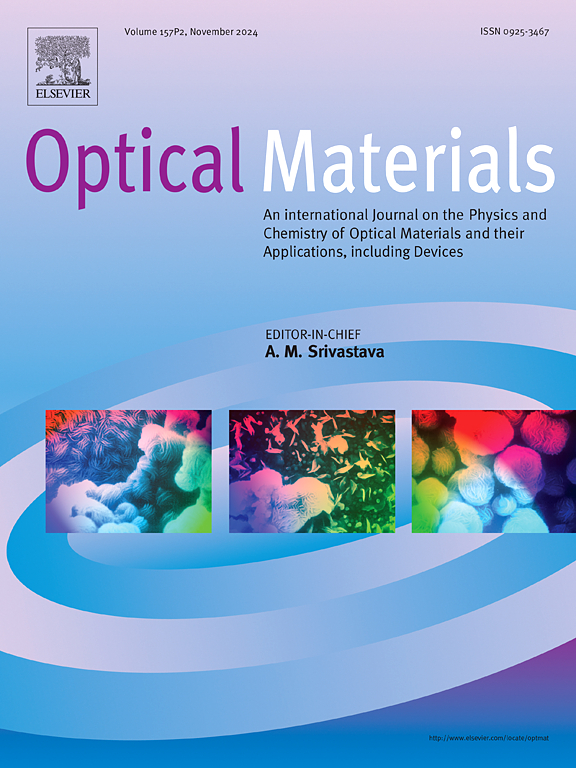The luminescence of Mn4+ in K2GeF6
IF 3.8
3区 材料科学
Q2 MATERIALS SCIENCE, MULTIDISCIPLINARY
引用次数: 0
Abstract
In this work, we report on the spectroscopic properties of Mn4+ in the fluoride host, K2GeF6. The Mn4+ luminescence intensity and lifetime are measured as a function of temperature. From the data, we have determined the onset temperature and activation energy for thermal quenching of luminescence. The optical properties and thermal quenching behavior of Mn4+ in K2GeF6 are compared with those reported for commercial Na2SiF6:Mn4+ and K2SiF6:Mn4+ (TriGain®) phosphors. This comparative study sheds light on the mechanism of thermal quenching of the Mn4+ ion luminescence in the A2XF6 (A = K, Na; X = Si, Ge) family of materials. We provide evidence that the activation energy and the onset temperature of thermal quenching for the 2E→ 4T2→ 4A2 crossover process is correlated with the energy of the 4T2 level and argue that this is a robust electronic structure-property relationship in host fluorides with low defect density. The K2GeF6 is reported to undergo structural phase transitions in the temperature ranges of 220–240 K and 150–170 K. We have probed the phase transitions by temperature dependent Raman spectroscopy. The evidence for structural phase transition in our Raman experiments is lacking.
求助全文
约1分钟内获得全文
求助全文
来源期刊

Optical Materials
工程技术-材料科学:综合
CiteScore
6.60
自引率
12.80%
发文量
1265
审稿时长
38 days
期刊介绍:
Optical Materials has an open access mirror journal Optical Materials: X, sharing the same aims and scope, editorial team, submission system and rigorous peer review.
The purpose of Optical Materials is to provide a means of communication and technology transfer between researchers who are interested in materials for potential device applications. The journal publishes original papers and review articles on the design, synthesis, characterisation and applications of optical materials.
OPTICAL MATERIALS focuses on:
• Optical Properties of Material Systems;
• The Materials Aspects of Optical Phenomena;
• The Materials Aspects of Devices and Applications.
Authors can submit separate research elements describing their data to Data in Brief and methods to Methods X.
 求助内容:
求助内容: 应助结果提醒方式:
应助结果提醒方式:


